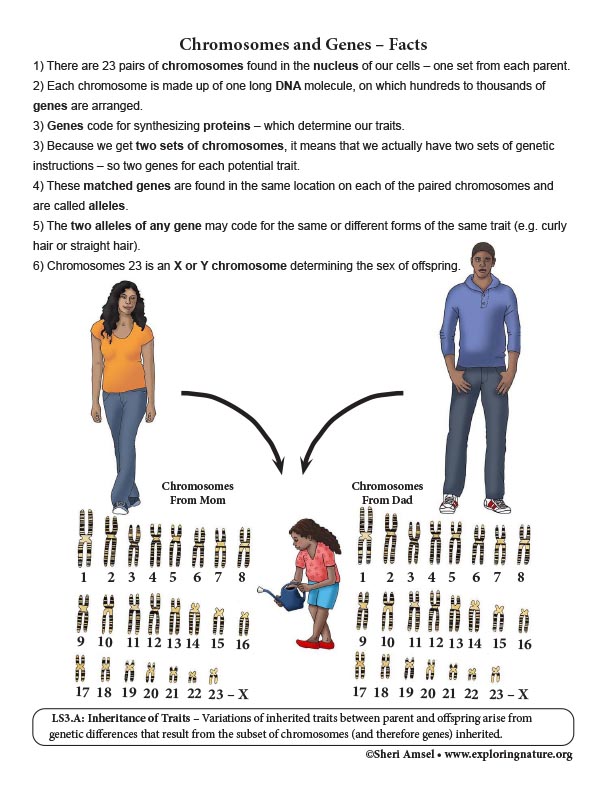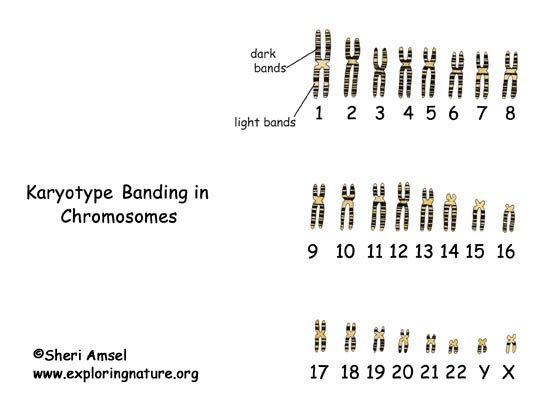

1) There are 23 pairs of chromosomes found in the nucleus of our cells – one set from each parent.
2) Each chromosome is made up of one long DNA molecule, on which hundreds to thousands of genes are arranged.
3) Genes code for synthesizing proteins – which determine our traits.
4) Because we get two sets of chromosomes, it means that we actually have two sets of genetic instructions – so two genes for each potential trait.
5) These matched genes are found in the same location on each of the paired chromosomes and are called alleles.
6) The two alleles of any gene may code for the same or different forms of the same trait (e.g. curly hair or straight hair).
7) Chromosomes 23 is an X or Y chromosome determining the sex of offspring.
Genes appear layered on our chromosomes in a very specific way -- like a road map. This is called karyotype banding. If we know where each gene is located, we can find it on anyone’s chromosomes. This is very useful when looking for specific genes that may cause a deadly disease. The light and dark bands on the chromosome karyotype match with the light and dark staining chromatin.
Collaborative consultation on website genetics and genomics from Dr. Stephen M. Carleton, Assistant Professor, Department of Anatomy and Cell Biology, SUNY Health Science Center at Brooklyn.
When you research information you must cite the reference. Citing for websites is different from citing from books, magazines and periodicals. The style of citing shown here is from the MLA Style Citations (Modern Language Association).
When citing a WEBSITE the general format is as follows.
Author Last Name, First Name(s). "Title: Subtitle of Part of Web Page, if appropriate." Title: Subtitle: Section of Page if appropriate. Sponsoring/Publishing Agency, If Given. Additional significant descriptive information. Date of Electronic Publication or other Date, such as Last Updated. Day Month Year of access < URL >.
Amsel, Sheri. "Chromosomes and Genes – Facts" Exploring Nature Educational Resource ©2005-2025. March 21, 2025
< http://www.exploringnature.org/db/view/Chromosomes-and-Genes-Facts >

